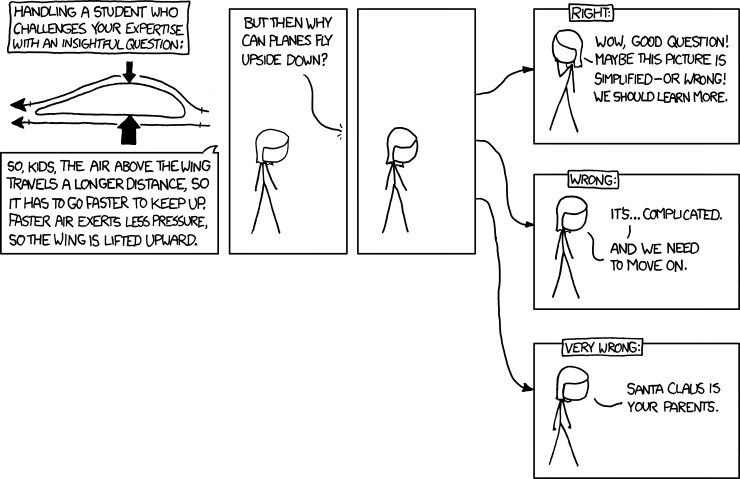I’m just a dumb rockhead, so I’m probably digging a deep hole by going here. But the excellent XKCD asks a question I’ve been asking for years. As a private pilot I’ve always suspected that the Bernoulli explanation was at least part B.S. Over the years I’ve asked some pilots, flight instructors, and authors of flight manuals this same question. How do airplanes fly upside down? The answer I get usually involves pointing the nose of the airplane up so the air has to travel longer over the upward (bottom) side of the wing. But this never really made sense to me. In normal flight a pilot can keep the airplane flying just fine in (slightly) nose-up, nose-level, or nose down positions simply by adjusting power settings.
I’ve come to the conclusion that Newton’s third law is the more important factor in keeping airplanes aloft. The air strikes the bottom of the wing and deflects off, which pushes the plane up. The shape of the airfoil has a lot to do with the stability and handling characteristics of the airplane, but I’m not convinced it’s the main factor in keeping the airplane aloft.

No comments:
Post a Comment